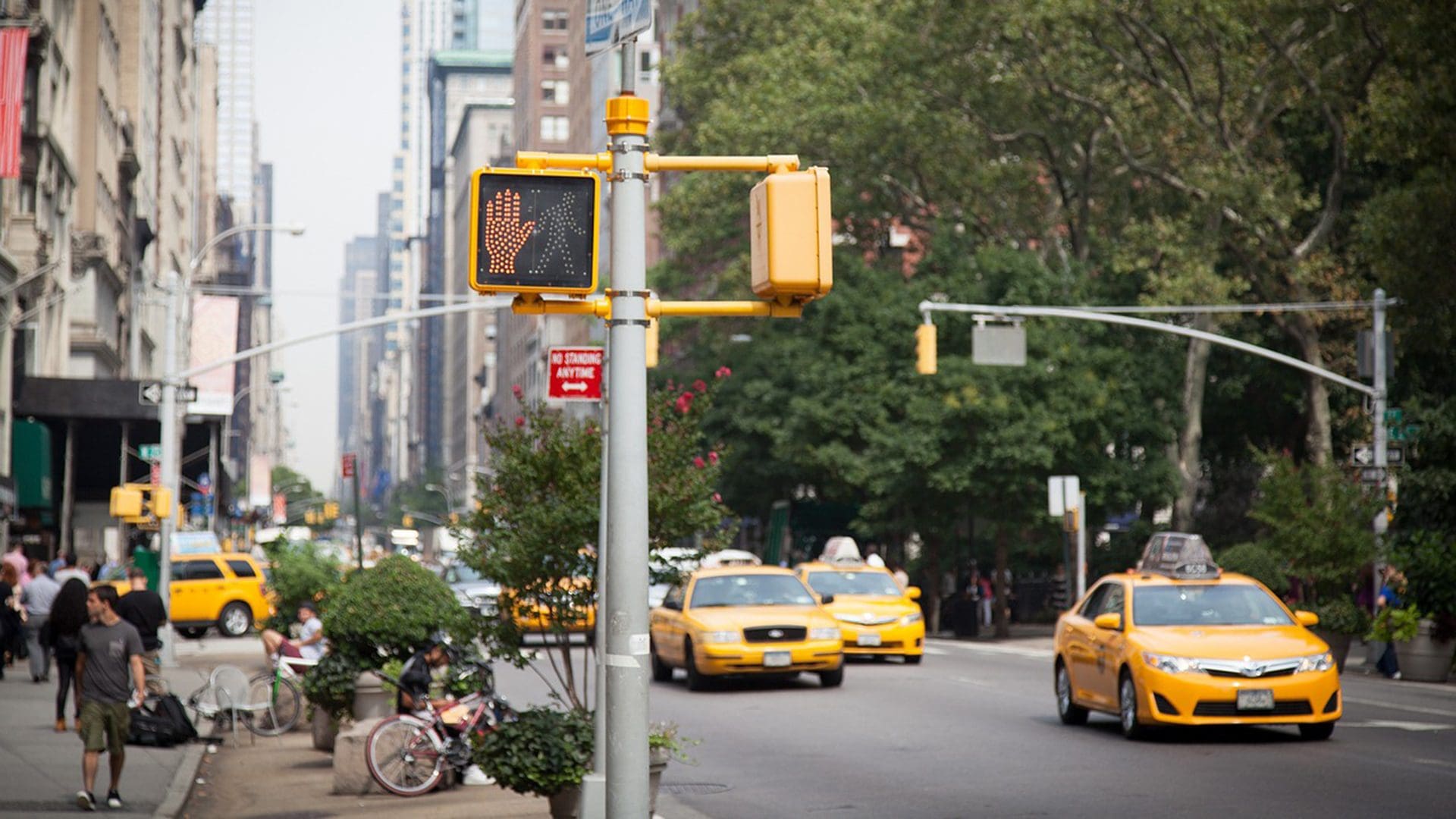October 16, 2019
The first national guidebook about the impacts of new technologies on land use and transportation was released in pre-publication form by Transportation Research Board October 1. Encompassing both rural and urban settings, the guide examines everything from connected and automated vehicles, to mobility as a service (MaaS), to micromobility, to the spiraling curbside disruptions of e-commerce.
We sat down with Rick Dowling and Abby Morgan, the principal authors of NCHRP Report 924: Foreseeing the Impact of Transformational Technologies on Land Use and Transportation, to get the inside story.


Left: Abby Morgan, PhD. Right: Rick Dowling, PhD.
What is your background with emerging transportation technologies?
Rick: Like most everybody in this profession I learned it all on the job. That was the fun part, exploring a new field in transportation.
Abby: I studied crash data in grad school, then went to the regulatory side [the National Highway Traffic Safety Administration] where I used data to support rules for new crash avoidance technologies. I’m passionate about understanding how we can use data to write policy that helps people avoid crashes and makes them less fatal when they do happen.
What was the first technology you remember encountering in your professional career that made you think, ‘this will change everything’?
Rick: I’m an engineer, so by nature I’m a skeptic. There aren’t too many technologies I have thought would change everything. Each technology makes its contribution, but no single technology is the silver bullet that will solve all our transportation challenges.
Abby: I’m very concerned about potential disbenefits from overreliance on technology. Forward collision warning, for example. A radar or camera looks ahead and detects objects in the road you can’t avoid at the speed you’re going. It alerts you to apply the brakes. At first that sounds great, but a lot of people will relax and assume the technology is looking out for them – that it will do more than it can do. I worry this technology will just enable even more distraction than we’re seeing today.
Why was this report needed?
Rick: The public sector is not used to dealing with a strong private sector role in transportation. Now we have all these new entrants into the field who are seeing dollar signs. Agencies need to understand better how the private sector operates so they can ensure the private and public sectors work together to improve the public good. This report hopefully will contribute to public agencies’ knowledge base of new technologies.
Abby: Tech and auto companies have hyped safety as a reason for developing automated and connected vehicles because the public understands its value. The community is buying into the safety hype, but that’s not why this is happening. It’s happening so someone can make money.
As a community, we need to figure out how to ensure that all road users can benefit from new mobility options. The public and private sectors need to cooperate so we can learn from each other. We can’t create new rules in a vacuum.
As a community, we need to figure out how to ensure that all road users can benefit from new mobility options. The public and private sectors need to cooperate so we can learn from each other. We can't create new rules in a vacuum.
- Abby Morgan, PhD, Senior Engineer
What interested you most about this project?
Rick: The opportunity to separate fact from fiction was what really attracted me. A lot of our report was written with that goal in mind. These are the facts, here’s the fiction. The goal was to give planners and engineers a grounding in what emerging technologies are.
Abby: I hadn’t focused specifically on the land use impacts before – I’d been focused mostly on the vehicle technology side. Emerging technologies have a huge impact on long-range transportation plans. If we expect to see changes in land use, we need our long-range plans to reflect those changes.
What did you learn that surprised you?
Rick: What surprised me but shouldn’t have was the wide range of expectations for any new technology. Whatever it is, some people think it will be a disaster, some think it will be Nirvana. As you read the literature more carefully though you begin to realize everyone’s talking about different parts of the same elephant. And there’s no consistency in what people mean when they use some of these new terms.
The usual method of conducting research is to go the traditional academic literature search route, but academic journal articles on this subject tend to be a year out of date by the time they have passed through the publication process. The most current sources I found were in blogs, electronic trade journal articles, and other online sources. It’s a Wild west out there on the internet.
Abby: I didn’t know there were electric ferries up in the fjords of Norway! I also didn’t fully understand the impact e-commerce is having on land use. Two-day delivery on Amazon Prime is great, but it changes everything. Warehouses need to be closer to urban and suburban areas, and goods aren’t going on one big truck to a loading zone behind a store, they’re going bit by bit to people’s doors. It’s really impacting curb space.
One question we haven’t answered yet is what’s going to happen when 3D printing starts to make a dent in e-commerce? It could happen sooner than we think. Friends of mine are renovating their house, 3D printing many of the parts they need instead of driving to the hardware store. Just an average suburban California family doing a renovation project with a 3D printer.
Where do you see emerging tech going in the next few years and beyond?
Rick: It will settle into a steadier pace. Every technology has an initial phase where it evolves rapidly. Eventually it saturates the market and tops out. At some point, everyone will have data and no one will be that excited about getting it anymore. Autonomous vehicles are rocketing up right now. They’ll top out too.
Abby: Today, it seems you need a different app for each mode of transportation (bus, train, bikeshare, ridehail, meal delivery, etc.). It’s easy to access your accounts and real-time travel information if you have a smartphone, data plan, and bank card. Moving forward, we need to develop payment systems that are accessible to everyone, even if they don’t have these things. There are some good examples of cities testing out kiosks, prepaid cards, or phone- or text-based access, but there need to be more.
What would you say is the most important thing for public agencies to bear in mind about emerging technologies?
Rick: Get data. Be informed. And you have to know what to do with the data once you have it. If you don’t it’s just garbage. Agencies need to get closer to knowing what Google knows – to monitor what’s going on in their cities. Know where your e-bikes are being parked or if they’re getting thrown in the river. It isn’t the technology that’s important, it’s the data.
Abby: We need to acknowledge cybersecurity risks and start training our staff today. Technology is evolving so quickly that we can’t afford to wait until we have a threat to develop protocols and learn how to protect our systems. Until recently, New York City’s signals worked on a manual timer. Operations would go around with a stopwatch and change the timing by turning an actual knob. No one could hack into the old NYC signal system!

What can cities do when technologies are withdrawn by private vendors because they’re not profitable?
Rick: Cities need to be nimble and flexible. You can build yourself into a corner by depending too much on a specific technology continuing. Three years ago, everyone was building racks for bikeshare. Then dockless ebikes came on the scene and displaced them. Now people want dockless e-scooters and the bikes are getting pushed aside. Meanwhile, cities build infrastructure that lasts 50 years. The downtown grid has been there for 100 years.
For the customer it’s about cost and time. The technology itself isn’t important unless it delivers low cost and short travel times. The technology that will win out is the one that can get the customer to their destination quickly, cheaply, and dependably.
Abby: Stay focused on serving the needs of all travelers, regardless of which mode they choose or which technology bells and whistles are attached. We should provide safe spaces for pedestrians, bicyclists, and whatever micromobility fad or level of vehicle automation gives people additional travel options. Private companies may pull out of the local market, but we will still have pedestrians and bicyclists.
It’s fascinating that bicycle advocates played a major role in getting our roads paved over 100 years ago, and e-scooters may be the technology to help us refocus on creating safe and comfortable roads to ride on today.
How would you like this guidebook to serve agencies into the future?
Rick: I want the guide to be a 24/7 maintained website. New things are constantly coming out. Cities really need a forum where they can share what they learn.
Abby: We had to think through how we wrote a guidebook so it could have a longer shelf life given the rapid evolution of technology. We tried to make it more about the big picture – more technology types than specific systems. Even in the time we wrote this we saw bikeshare go from docked bikes to dockless e-bikes to e-scooters. We even saw an electric unicycle. Maybe it’s time to bring back the Segway!
The pre-publication version of National Cooperative Highway Research Program (NCHRP) Report 924: Foreseeing the Impact of Transformational Technologies on Land Use and Transportation is published by TRB. It can be downloaded free of charge from their website. The report will be published in early 2020.
